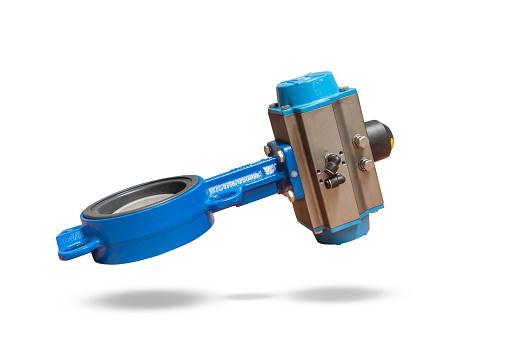An ideal water supply system is a part of any civilization. Water was supplied through traditional methods, like canals, in the early ages. Many had wells, ponds, etc. But with the introduction of technology, the water supply process has become easier. Now, installing pumps and modern plumbing solutions to the water supply is widely used as a source of water supply.
Water supply to a bigger or a confined area requires a component that maintains the water flow and water control. Any increase in speed can lead to an overflow of water, resulting in water wastage. In this perspective, butterfly valves are considered a brilliant segment of the piping system that prevents water wastage by keeping the water flow steady. Make sure to buy only from a reputed butterfly valve manufacturer.
What is a Butterfly Valve?
Butterfly Valves refer to those appliances that help control the internal flow of elements within a pipe by rotating a disc a quarter turn. It works exactly like a butterfly, and that’s why it is called a Butterfly Valve. In general, the discs of Butterfly Valves are installed perpendicular or parallel to water flow.
The valve differs from other valves concerning its ability to move pressure within the pipes. This equipment is commonly used at water pumping stations. A Butterfly Valve is more compact, which helps to ease the installation process. Butterfly Valves are extensively used in large areas. Make sure to wear protective gear such as Jackets while operating the valves. Make sure to buy them only from reputed Fangyuan Jacket manufacturer
Butterfly valves are classified into four primary components: body, disc, stem, and seat. The body indicates where the double pipes may be joined in a shape called a ‘lug’; it then links to the next component disk. This is the part where the flow of water is stopped.
The next stem portion consisted of substances one or two pieces of a certain design, and the end part is the valve seat where the supply is likely to be turned off.
Types of Butterfly Valves
Butterfly valves are mainly divided into three different types. They include Plastic Lines, Rubber Lines, and Metal. A brief description of each type of butterfly valve is expressed here.
- Plastic Lines: This range of butterfly valves is widely used for sanitary purposes and supplies severe chemicals because of its resistive power. They are normally meant for 150# (PN10/16) flanges. The GAR-SEAL® valve is an example of a Plastic-Lined valve.
- Rubber Lines: The Rubber Lines option can work to supply lower temperatures. They don’t tarnish easily. As an affordable type of Butterfly, Valve Rubber Lines is good. However, they are not on demand. They can be used in 150-300# (PN10-25) flanges.
- Metal: Metal valves are used for certain situations. For instance, when the supply work activities require the presence of a high-pressure temperature, the use of Metal Valves is preferable. Metal Valves can be used in 150-2500# (PN10-160) flanges. Metal Valves can be found in Single Offset, Double Offset, and Triple Offset options.
Why are Butterfly Valves used?
Butterfly valves are usually used to regulate the flow of substances within pipes by slowing, starting, and stopping media. In this processing, the disc opens and closes with a low-torque rotation of 90 degrees and is adaptable to work for any compatible application. Butterfly valves are lightweight and cost less, so Butterfly Valves are preferred against other types of valves in pipelines. For people interested in jet skiing, make sure to use a floating boat dock to park your jet skis.
In some processing, factors such as high temperature and corrosion can affect the seal of the valves. However, as Butterfly Valves can withstand extreme cold or heat, the Butterfly Valve seal remains intact, important for energy production. The use of Butterfly Valves ensures safety as well.
Applications of Butterfly Valves
The discovery of Butterfly Valves has ushered in a new era of process and application improvement in the industrial sector. Butterfly Valves are convenient to use, and it has sufficient ability to control the flow of materials within the pipes.

And due to the immense benefits of Butterfly Valves, they are now being started to apply in different industries. Here we are keeping a list of some typical applications of Butterfly Valves.
- Provision of Compressed Gas and Air
- Water Supply
- Cooling, air, gasses, fire protection, etc.
- Vacuum Service
- Treatment of Wastewater
- Chemical and Oil Industries
- Power Generation
- Food Processing
- Lubrication System
- High-pressure and high-temperature water and steam services.
- Refineries
Conclusion
There were several advantages to using Butterfly Valves. It is more user-friendly to use in pipelines than other graded valves. At the largest size of 2″, Butterfly Valves are smaller, lighter, and more economical than Gate, Plug Valves, and Globe Valves. However, installing Butterfly Valves requires adopting certain guidelines.
When installing valves, lightly open the disc to relieve valve pressure. Generally, zero offset valves can be installed in any direction. However, in the context of double and triple offset valves, installing the butterfly valve in the right manner is crucial.















